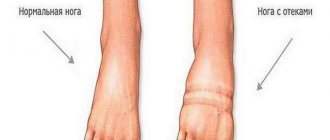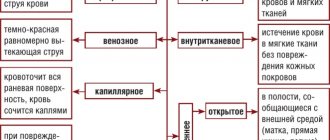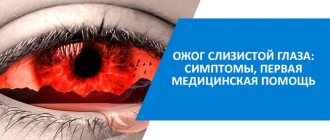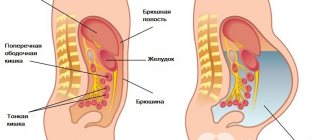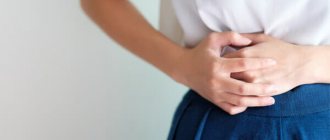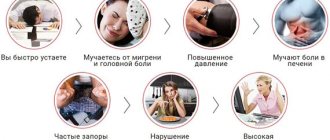Myositis of the back muscles is a common pathology, which is accompanied by pain in the affected area, aggravated by movement or palpation. This disease is often confused with osteochondrosis, which many patients prefer to treat on their own. This therapy suppresses symptoms, but does not affect the root cause of the disease and does not stop its development. Over time, this leads to limited joint mobility, increased muscle weakness, and sometimes atrophy.
To avoid the dangerous consequences of myositis, you need to visit a doctor in time to conduct a quality diagnosis, identify the cause of the pathology and draw up a treatment plan. The fact is that different forms of the disease differ in symptoms, so you should not try to make a diagnosis yourself. Timely, competent treatment using appropriate medications and other conservative techniques will allow you to achieve a faster recovery.
Basic information
Myositis of the spinal muscles is an inflammation of the back muscles of different origins, which differs in course and clinical picture. Pathology can be inflammatory, traumatic, toxic in nature. One muscle or an entire group may be affected.
The causes of damage to the back muscles are varied: infectious diseases (ARVI, influenza, chronic inflammation of the tonsils), autoimmune pathologies, parasitic infections, toxic lesions, etc. Myositis can occur in acute and chronic forms. In advanced cases, a purulent process develops that spreads to the skin. Also, different forms of pathology differ in severity.
Reference. Most often, myositis affects the neck and lower back. These types of inflammation are diagnosed at least once in almost every person’s life. But with the right approach, they can be quickly treated. However, they are often confused with osteochondrosis of the cervical or lumbar segment.
There are severe forms of myositis, in which the patient must be hospitalized and undergo long and complex treatment.
Massage and aromatherapy
Massage procedures in combination with aromatherapy can be used from the very first days of illness. At the same time, at the initial stage, light stroking movements are indicated; when the pain begins to subside, you can move on to kneading movements. In difficult cases, it is recommended to seek qualified help from a professional massage therapist.
To enhance the therapeutic effect of massage, you can use essential oils that can penetrate deep into the skin.
So, rosemary oil will relieve pain, eliminate swelling and inflammation. Marjoram oil has the same effect. But keep in mind that rosemary is contraindicated during pregnancy, if you are prone to cramps or have increased skin sensitivity.
Cedar oil enhances blood metabolism and saturates tissues with oxygen. This oil should not be used during pregnancy or excessive excitability of the nervous system.
Cinnamon oil warms up, relieving muscle spasms.
Lavender oil helps relieve inflammation and relaxes. Chamomile, pine, juniper, as well as cypress and lemon essential oils are suitable for the same purposes.
Method of using the oil: four drops of the selected essential oil must be diluted in 10 ml of any type of vegetable oil immediately before the massage.
The prepared mixture is applied to the sore muscles with light stroking movements for several minutes, after which it is rubbed well with massaging movements.
If the state of health of the muscles themselves allows, it is recommended to “immerse” into the muscle with relaxed fingers, strongly influencing it, and no discomfort should arise. The massage is carried out throughout the week.
Classification of myositis
Myositis is divided into several types depending on its origin and course. There are also several subtypes of pathology, as well as mixed varieties.
Types of back muscle myositis according to the nature of inflammatory changes:
What is myositis
- Purulent - develops against the background of a purulent-necrotic process (for example, osteomyelitis) or septicopyemia (intoxication and the formation of metastatic abscesses). It is provoked by staphylococci, streptococci, pneumococci, anaerobic bacteria. The pathology is accompanied by limited or extensive abscesses, areas of necrosis, and purulent muscle inflammation. The patient suffers from severe local pain, which intensifies when moving or touching the affected area.
- Parenchymal myositis is more often diagnosed in animals, especially those intended for hunting. Occurs due to muscle overstrain, hypothermia, and prolonged lack of active movements. The pain intensifies with movement, the local temperature is increased, and the tissues are compacted. The affected muscles are gradually replaced by fibrous tissue.
- Interstitial - develops when Koch's bacillus or Treponema pallidum penetrates the connective tissue between the muscles. Pathological microorganisms provoke inflammation and the formation of specific seals. After some time, the inflammatory process spreads to the muscles. The disease develops slowly, occurs in a chronic form, and no significant periods of exacerbation occur.
- Fibrous is a chronic pathology in which the connective tissue grows, muscle fibers atrophy, scars form, the muscle shortens and undergoes calcification. Strands, compactions and thickenings appear on the affected area. There is no pain, muscle function is impaired when it is completely damaged and shortened.
Depending on the clinical course, the following types of back myositis are distinguished:
- Acute - occurs when the fibers become locally infected; moreover, it occurs as a result of injury, excessive physical stress and hypothermia of the muscle.
- Chronic - muscles become inflamed due to an infection, for example, ARVI. Characteristic symptoms do not appear immediately. Also, this form of pathology can be a consequence of myositis, which has not been completely cured.
Acute myositis of the back is characterized by acute pain
Based on their origin, the following types of myositis are distinguished:
- Traumatic - the fibers of the back become inflamed after a blow, fall or other injury. At risk are professional athletes and lovers of an active lifestyle.
- Rheumatic – occurs in animals, characterized by suddenness and frequent relapses. The exact causes of development are unknown, but doctors suggest that the disease develops as a result of infection, allergies or neurodystrophic disorders.
- Infectious – progresses against the background of a viral (enterovirus, influenza) or bacterial infection (syphilis, brucellosis, tuberculosis). The pathology is accompanied by pain and weakness in the affected area of the back. It progresses rapidly and disrupts motor activity, but basic reflexes are preserved. After the peak of development, symptoms quickly disappear. The duration of the disease is from 2 – 3 days to 2 – 3 weeks.
- Parasitic - muscles become inflamed due to a toxic-allergic reaction. There is pain, swelling, and the muscles become tense. The patient feels weak and the temperature rises slightly. The pathology occurs in waves, which is associated with the life cycle of parasites.
- Toxic - the muscles become inflamed due to insect bites, alcohol or medication poisoning. Then the pain is supplemented by swelling, kidney dysfunction, polyneuritis (muscle weakness, sensory impairment, multiple paresis), and muscle thinning.
Also, back myositis includes the following pathologies of different origins:
- Polymyositis - affects several muscles. This is a severe form of pathology, which is often provoked by autoimmune diseases. The main symptoms are pain and increasing weakness of the back muscles. In the absence of proper therapy, the muscles may atrophy and tendon reflexes will disappear.
- Dermatomyositis is a systemic pathology that affects the skin, skeletal and smooth muscles, as well as internal organs.
- Neuromyositis is a lesion of the spinal muscles and nerve fibers. Then the pain is accompanied by a change in sensitivity. In the absence of therapy, the pain syndrome will bother you even at rest. There is also muscle tension, joint pain, and sometimes the skin is affected.
- Polyfibromyositis is an inflammation of the fibers of the back, in which they begin to be replaced by fibrous tissue. There is severe pain when moving or palpating the diseased area, areas of compaction appear, mobility is limited, and abnormal muscle contraction is observed.
- Myositis ossificans - calcium salts are deposited in the connective tissue. The pathological process is provoked by injuries or congenital anomalies. The disease is manifested by weakening of muscles, their thinning, the appearance of compactions, and the formation of calcifications (accumulation of calcium salts). The pain syndrome is not expressed.
Reference. In children with polymyositis, there is a risk of damage to the lungs, cardiovascular system, and skin. In men aged 40 years and over, the pathology is complicated by the formation of cancerous tumors in various organs.
Depending on the prevalence, local and diffuse back myositis are distinguished. In the first case, one muscle group is inflamed, and in the second, several muscle groups are inflamed.
What to do if you have a cold back: treatment of myositis
Therapy should be selected by an orthopedic traumatologist or neurologist after confirming the diagnosis, taking into account the cause that caused muscle inflammation. If the back is slightly blown, then treatment can be carried out at home.
First aid for myositis
For myositis of the back muscles, two rules should be followed:
- physical peace;
- warming up the muscles.
If the pain increases, the patient is advised to rest for at least 3 days on a hard bed. Rest and absence of sudden movements will help the back muscles relax and recover. For warming up, special ointments, compresses, and traditional medicine methods are used.
Drug therapy
The treatment regimen for a cold back condition includes:
- non-steroidal anti-inflammatory drugs (Diclofenac, Indomethacin) in tablet and injection form;
- ointments with a warming effect (Finalgon, Voltaren, Menovazin solution);
- painkillers if necessary (Ketorol, Baralgin).
Important: the use of warming ointment is prohibited in case of bacterial myositis, as this can aggravate the situation and cause generalization of the purulent process
Traditional medicine for myositis
It is advisable to use traditional methods of help when you have a cold back if there are no contraindications to them and only after consulting a doctor. Some traditional methods of treating back muscle myositis are not inferior in their effectiveness to medications.
The most effective recipes are:
- Potato compress. Potatoes are boiled with their skins on, mashed into a puree and laid out on a cotton cloth folded in 3-4 layers. The compress is applied to the sore spot and left until it cools down. Afterwards, rub it with vodka and wrap your back well.
- Massage with essential oils. For myositis, juniper, mint, sage, and lavender oils will relieve pain, tension and inflammation in the muscles.
- Dry compress. For him, in a situation where the back is blown, use ordinary salt, which is heated in a frying pan (in the oven) and poured into a fabric bag. When applied, the sore muscle warms up well, blood circulation is activated, the inflammatory process is eliminated, and pain is relieved. Afterwards they give a light back massage.
- Rubbing the back with fir balsam. You can make it yourself (mix fir oil and melted fat in a 1:1 ratio) or purchase it at the pharmacy. A compress is made with the balm for 1 hour, after which the back is warmly wrapped.
Please note: if after 3 days of treatment the patient’s condition has not improved or even worsened, you should immediately visit a specialist for a more complete examination. In some cases, back pain in women in the lumbar region is a sign of an inflammatory process of the kidneys, uterine appendages, or on the left under the scapula - myocardial infarction
To avoid swelling, during treatment it is recommended to exclude selenium, fatty, and spicy foods from the patient’s diet.
Causes of muscle inflammation
Myositis of the spinal muscles occurs for the following reasons:
- Infectious diseases, for example, colds, flu, sore throat. This is the most common cause of inflammation.
- Bacterial and fungal infections are less likely to affect the muscles. Fibers can be affected by pathological microorganisms or their toxins.
- Autoimmune pathologies provoke severe forms of back myositis (polymyositis, dermatomyositis, myositis ossificans). Moderate inflammation is caused by rheumatoid arthritis, scleroderma (fibrosis of the skin and internal organs), and lupus erythematosus.
- Parasitic infections. Most often, the disease develops against the background of toxoplasmosis, echinococcosis, cysticercosis, and trichinosis.
- Intoxication of the body with toxic substances (short-term or permanent). Muscle inflammation occurs with alcohol or drug addiction. Some medications cause minor damage to fibers, for example, α-interferon, hydroxychloroquine, colchicine, statins.
- Hypothermia, injuries, muscle cramps, and excessive physical exertion cause mild myositis of the back muscles. Especially if the patient has poor physical fitness and untrained muscles. When muscle tissue is torn, pain, swelling and weakness only occur for a few hours or days.
- Staying in an uncomfortable position for a long time, for example, when working at a computer, playing the violin, piano, or driving a car. Then a specific muscle group is loaded.
- Infection of an open injury, the presence of foci of chronic infection (for example, caries), penetration of pathogenic microorganisms into the back muscles when injection rules are violated. Then purulent myositis develops.
Carefully! Extreme physical exertion sometimes leads to rhabdomyosis (muscle death). This syndrome occurs with poliomyositis and dermatomyositis.
Often osteochondrosis, disc herniation or arthrosis lead to inflammation of the spinal muscles. Frequent stress can also provoke pathology, as it causes tension in muscle fibers.
How does the disease manifest?
Pain in the back, chest or other part of the body where there are muscles are the first signs of the disease, which are not immediately felt. It can be triggered by various irritants, which lead to back myositis, but the symptoms and treatment are very similar. However, there are also advanced cases when the disease can develop into purulent muscle myositis, and surgical intervention cannot be avoided. There are two types of disease that differ from ordinary inflammation, in such cases a complete diagnosis is needed:
- Dermatomyositis is a female disease caused by age-related infection in the body or constant stress. Leads to the appearance of red spots on the body, swelling of the limbs and increased temperature.
- Polymyositis - affects several muscles in the body at once after suffering a serious illness: influenza, bronchitis, inflammation. May lead to muscle atrophy.
Symptoms
Symptoms of back myositis are varied and depend on the form of the pathology. But we can identify common signs that are characteristic of all types of the disease.
At an early stage of the disease, an acute pain syndrome occurs, which disappears on its own after 5–7 days. However, this does not mean that treatment can not be carried out, since if inflammation is ignored, back myositis will become chronic, and the lesion will spread over a large area.
Doctors distinguish 3 stages of back muscle myositis:
- Stage 1 is characterized by pain, difficulty moving, and excessive tension in the back muscles. If proper treatment is carried out at this stage, a quick recovery will occur. Otherwise, there is a high risk of the pathology becoming chronic.
- At stage 2, the standard symptoms of myositis periodically resume. Attacks of pain become more frequent, become longer, and painful nodules form on the affected area.
- At stage 3, the pain is constant, and severe weakness is felt. In the absence of proper therapy, inflammation spreads to healthy muscles, after some time they atrophy.
Placement of trigger points for back myositis
The aching pain intensifies when moving the body or limbs, as well as during palpation. The muscles get tired faster when performing habitual actions. Often the skin on the affected area turns red and swelling appears. Sometimes the pathology causes a slight increase in temperature (37 - 38⁰C), headache, and increased concentration of leukocytes. By palpating, you can identify trigger points (painful areas with local muscle tension) along the spine, under the shoulder blades or in the lumbar region.
In the chronic form of the pathology, the painful reaction intensifies with repeated static loads, weather changes, after excessive physical stress or hypothermia. Then the muscles weaken, and the motor activity of neighboring joints may be limited.
Symptoms of myositis vary depending on the affected area. For example, when the muscles of the neck become inflamed, a dull pain appears on the right or left, which can radiate to the back of the head, temple, ear, shoulder, and the area between the shoulder blades. Neck mobility is slightly limited.
Myositis of the lumbar muscles is also often recorded. This pathology is often confused with lumago (lumbago in the lower back). But lumbar myositis is accompanied by aching pain, not acute pain, which does not disappear at rest and intensifies with movement or palpation.
Important! Myositis of the lumbar and neck must be differentiated from osteochondrosis of the corresponding segments, as well as intervertebral hernia. This is necessary for effective treatment.
Methods of therapy
Treatment of the pathology is complex; the patient is required to take medications, use physiotherapy methods, and lifestyle correction.
Drug therapy
To eliminate the causes and symptoms of pathology, it is necessary to take the following groups of drugs:
- Non-steroidal anti-inflammatory drugs to eliminate the source of inflammation and normalize the condition of muscle tissue. The drugs are administered intramuscularly. The course of treatment is 7 days (long-term use of this group of drugs is not recommended, since such treatment can provoke gastric ulcers).
- Means for increasing the tone of blood vessels, allowing to normalize blood circulation and metabolic processes in the affected areas.
- Painkillers that relieve severe pain.
- Antibacterial agents are prescribed if the cause of inflammation is a bacterial infection.
Exercise therapy
Such types of exercises as yoga and therapeutic exercises have a positive effect on the condition of muscle tissue and help strengthen it.
It is important to understand that physical activity should be moderate, and exercises can only be done at the stage of remission, when the pain syndrome does not manifest itself. A set of exercises is developed by a doctor individually for each patient, taking into account the stage of development of the pathology and the general state of human health.
Diet
The patient's diet should be as varied as possible, rich in vitamins and minerals necessary for normal muscle development
It is also important to include in your daily menu foods rich in salicylates, substances that have an analgesic effect. The basis of the diet should be such products as sea fish, carrots and beets, vegetable and fruit juices, dairy products, potatoes, bell peppers
Diagnostic measures
If signs of back myositis appear, you should consult a neurologist or vertebrologist. Only a specialist will be able to determine the form of the pathology and draw up a treatment plan.
The diagnosis begins with collecting an anamnesis, the doctor asks the patient about the symptoms present, finds out when they appeared, what preceded it, etc. Then he conducts a visual examination of the back, pays attention to the nature of the pain, its intensification during palpation, finds trigger points, identifies neurological disorders (if present).
To establish an accurate diagnosis, the following studies may be prescribed:
- X-ray of the spine allows you to evaluate its structure, as well as its functional state.
- Ultrasound of the back is used to determine the condition of the soft tissues of the back. This diagnostic method allows you to identify the focus of muscle inflammation, areas of fibrous tissue degeneration, abscesses, etc.
- MRI is the most accurate method for assessing the condition of the soft tissues of the back
- CT is a highly informative study that shows even minimal pathological changes in bone tissue.
- Electromyography helps evaluate the electrical activity of the back muscles.
- A general blood test is prescribed to confirm/exclude an infectious or parasitic form of pathology. The study reveals an increase in ESR, an increase in the level of leukocytes, neutrophils, and eosinophils.
- A creatine kinase test is prescribed to determine the excess of this enzyme, which indicates damage to muscle fibers.
- Rheumatic tests allow diagnosing autoimmune pathologies. This study allows you to identify total protein, protein fractions, C-reactive protein, rheumatoid factor, etc. An analysis for myositis-specific antibodies is of particular diagnostic importance.
- Biopsy is the intravital collection of tissue fragments for examination under a microscope. This technique shows structural changes in the muscles, the vessels that feed them, as well as the surrounding connective tissue.
The symptoms of lumbar myositis are similar to the signs of kidney disease, so an ultrasound of the kidneys and laboratory tests of urine and blood are additionally prescribed.
Diagnostics
Photo: stophondroz.ru
Diagnosis of myositis begins with interviewing the patient. During the conversation, complaints are clarified, namely the nature of the pain, the degree of its intensity, as well as factors contributing to its intensification. With myositis, there is an aching, dull or pulling nature of the pain; the pain intensifies with movement and palpation of the affected muscle. After the interview, the doctor begins to palpate (feel) the muscles that bother the patient. During palpation, increased pain is noted, and in some cases painful lumps may be detected.
Next, general laboratory tests are prescribed (general blood test, general urine test, biochemical blood test), which help to identify changes in indicators characteristic of the infectious nature of the disease, and also assess the general condition of the human body. In addition, muscle inflammation is indicated by an increased level of creatine kinase, which is detected in a biochemical blood test.
EMG (electromyogram) is a study that allows you to evaluate the muscle response to a nerve impulse. With the help of this study, it is possible to determine the source of muscle damage, its location, the severity of the process and the nature of the damage. Depending on the type of electrodes, EMG is divided into 2 types:
- superficial, which is non-invasive, allows you to evaluate muscle function over a wide area;
- deep (invasive) - performed by introducing an electrode in the form of a thin needle into the thickness of the muscle. This type of EMG allows you to evaluate the work of a specific muscle area that interests a specialist. It is used much less frequently than superficial EMG, since the invasiveness of the procedure can lead to the development of unpleasant side effects.
Magnetic resonance imaging (MRI) is currently one of the safest and most effective diagnostic methods. Thanks to MRI, it is possible to identify affected areas and changes in the muscles, which greatly facilitates the diagnosis in question.
The most informative diagnostic method is a biopsy of the affected muscle, which makes it possible to most accurately confirm or, conversely, refute the presence of myositis in a person. The most common procedure is a fine-needle biopsy, and somewhat less frequently, an open biopsy (a small section of the muscle being examined is cut out through a small incision in the skin). The study does not require preliminary preparation from the patient and is carried out under aseptic conditions under local anesthesia. The resulting material is sent to a special laboratory for histological examination. Since this procedure is invasive, complications such as bleeding, infection, hematoma at the puncture site, and so on are possible.
It is important to be able to differentiate myositis from other diseases. For example, aching lower back pain may indicate that a person has kidney disease. To find out, the doctor additionally checks the effleurage symptom (Pasternatsky), which is considered positive when pain appears in the projection of the kidneys when effleurage is performed in the lumbar region. In addition, the results of a general urine test and biochemical blood test are carefully examined. Additionally, the doctor may prescribe an ultrasound of the kidneys, which will help visualize the existing kidney problem. If a spinal hernia or exacerbation of osteochondrosis is suspected, the nature of the pain is clarified, which will be more pronounced and persistent, and the presence or absence of irradiation of pain is also clarified. Next, an X-ray examination, CT or MRI of the spine of interest is performed. If there is pain in the calf muscles, an ultrasound examination of the vessels of the lower extremities is prescribed to exclude damage to the veins or arteries of the legs.
First aid for myositis
A patient who has experienced myositis of the spinal muscles needs to know how to behave during an attack. If you have to postpone your visit to the doctor until a later time, then to eliminate the pain you need to follow this plan:
- Take a warm (not hot) shower.
- Dress warmly, wrap yourself in a blanket.
- Don't go out into the cold street.
- Ask your family to apply an ointment or gel with an analgesic, anti-inflammatory or warming effect to your back.
- If the pain has not subsided after half an hour, then take NSAIDs or analgesics.
Try to visit a doctor as soon as possible.
Important! Do not take NSAIDs, analgesics or steroids for more than 5 days without a doctor's prescription. These drugs have many contraindications and side effects.
Myositis therapy with folk remedies
Warming compresses can be made based on herbal raw materials or food. Plants that have the property of relieving inflammatory processes in myositis include the following herbs: sweet clover, horsetail, chamomile, chamomile. Products include boiled potatoes and cabbage.
Potatoes are mashed and herbs are steamed. All components are placed in a gauze bag, it is placed on the inflamed area, covered with plastic wrap, insulated and left overnight.
Ointments are prepared independently from plant materials with anti-inflammatory properties and a fat base.
An example of ginseng ointment: mix 200 g of crushed dry ginseng root, 20 g of salt and 100 g of fat - better than bear fat, but if you can’t buy it at the pharmacy, you can replace it with badger, goose or dog fat.
All components are mixed in a water bath. Then the ointment is applied to problem areas.
Tinctures for rubbing are prepared according to the standard procedure - dried plant materials, which simultaneously have bactericidal and soothing properties, are poured with vodka at the rate of 100 g of raw materials per 500 ml of alcohol. Infuse the product for about a week at room temperature in a dark place. Plant materials that have the above properties: lilac or chamomile flowers, bodyaga powder, linden blossom, horsetail.
Treatment with vegetable oils is carried out in courses - 2 weeks every six months. The recipe for one of them: pour crushed red hot pepper pods – 2 pieces – into a glass of vegetable oil and leave for a week in a dark place. One thing to keep in mind is that the oil burns a lot.
The following oil is very effective in relieving inflammation:
- 15 g each take oats, yarrow, immortelle, celandine, calamus root, rowan, string, St. John's wort, lemon balm, plantain and adonis;
- 250 ml unrefined sunflower oil;
- dried birch chaga mushroom – 1 tablespoon.
The herbs and mushroom are ground into powder in a coffee grinder, poured with oil, stored in a dark place, shaking 2-3 times daily.
After a month, the oil is heated in a water bath until the first bubbles appear, filtered, and left in a dark place for another week.
A decoction of willow bark is used internally to treat myositis. Infuse a tablespoon of raw material into a glass of water like tea, bring to a boil in a water bath, and drink 5 times a day. The course of treatment is 40 days, a break of 2 weeks, and a repeat course. May cause a side effect - diarrhea, has weak choleretic properties.
Treatment
Treatment of back myositis should be comprehensive. When drawing up a therapeutic program, the cause of the pathology, the stage of its development, the individual characteristics of the body, and the presence of concomitant diseases are taken into account.
Main goals of therapy:
- Eliminating the cause of inflammation of the spinal muscles.
- Slowing down and then completely stopping the inflammatory process.
- Eliminate pain.
In case of severe damage to muscle tissue, the patient must remain in bed.
Physiotherapy is used as part of complex therapy for back myositis
Myositis must be treated comprehensively; the program consists of the following therapeutic measures:
- Drug therapy may include taking medications in the form of tablets, using external agents, intramuscular injections, and therapeutic blockades.
- Acupuncture and other acupuncture techniques can stimulate the immune system, accelerate blood circulation in the affected area, normalize trophism, and quickly cleanse it of harmful decay products.
- Physiotherapeutic procedures. Most often, for inflammation of the back fibers, electrophoresis, phonophoresis, ultra-high frequency, laser or ultrasound therapy are prescribed. These techniques can reduce pain, inflammation, speed up blood flow, restore nutrition, and stimulate the regeneration processes of damaged muscle tissue.
- Manual therapy. For myositis, gentle manual techniques are used to eliminate muscle spasms.
- Therapeutic massage for back myositis normalizes muscle tone, stimulates blood flow and trophism in the affected area, and improves general condition.
- Exercise therapy under the supervision of a doctor or instructor relieves muscle spasms and helps restore motor activity.
Carefully! Therapeutic massage is contraindicated for purulent myositis. Otherwise, the purulent process will spread to the surrounding tissues.
If there are painful trigger points, the doctor performs a therapeutic blockade. During the procedure, a mixture of anesthetic and corticosteroid is injected into the area of pain. The full course consists of 10 – 12 sessions. The blockade allows you to relieve acute pain and start recovery processes in the muscles.
The doctor will determine how to treat spinal muscle myositis after diagnosis:
- Analgesics: Analgin, Tempalgin, Pentalgin, Caffetin, etc. These drugs help relieve pain.
- Antispasmodics: Spazmalgon, No-shpa, Andipal, Spazgan. Relaxes cramped muscles and relieves pain.
- Muscle relaxants: Mydocalm, Notriksum, Muscoflex, Notriksum. Relieves muscle spasms.
- NSAIDs: Diclofenac, Next, Panoxen, Naproxen, Nimesulide, Celocoxib, Parecoxib. Relieves inflammation and pain.
- Antibiotics: Amoxiclav, Amoxicillin, Azithromycin, Clarithromycin, Tsiprolet. Prescribed for infectious myositis.
- Anthelmintics: Veromox, Pyrantel, Decaris, Levamisole. They are used for inflammation of the back muscles due to helminthiasis.
- Antiviral, immunomodulatory drugs: Interferon, Viferon, Polyoxidonium. Prescribed for myositis caused by a viral disease.
- Antimycotic agents: Fluconazole, Miconazole, Terbinafine. Indicated for fungal diseases.
- Anti-tuberculosis drugs: Isoniazid, Rifampicin, Streptomycin. Used for extrapulmonary tuberculosis.
At home, ointments and gels based on bee or snake venom (Apizartron, Vmprosal), formic or camphor alcohol (Capsicam) will help relieve pain. Anti-inflammatory, locally irritating, warming external agents, for example, Fastum gel, Finalgon cream, red pepper tincture, Menovazin solution, have a good effect.
How long the treatment will last depends on the stage of the pathology and the patient’s compliance with all the doctor’s instructions. If the rules of therapy have been followed, the pain in the back muscles will disappear after 3 to 7 days. The pathology can be completely cured in 3 to 6 weeks.
FAQ
How is the disease diagnosed?
Myositis is diagnosed based on patient complaints of muscle pain during movement and at rest, the appearance of compactions and muscle soreness on palpation. Body temperature may rise. It is necessary to study the medical history, which may be associated with trauma, injury, convulsive syndrome, or exposure to toxic substances.
Read also…. Synovitis of the knee joint - what is it?
Are you suffering from coccydynia? It will probably be useful for you to familiarize yourself with how to treat pain in the tailbone using traditional and folk methods.
Do you have vertebrogenic lumbodynia? Then you should have an MRI of the cervical spine, read about it here.
Knowing the symptoms of a lumbar disc herniation will prevent the disease from progressing. Useful information is here.
The number of leukocytes and ESR may be increased in the blood. If it is parasitic myositis, the number of eosinophils will be increased in the general blood test. For autoimmune diseases, specialized diagnostics are performed. Electromyography can be performed, this will make it possible to assess the activity of the disease and exclude the neurogenic nature of muscle weakness.
Is massage beneficial?
Yes, massage is really useful for relieving muscle spasms, warming up muscles and improving blood circulation.
Contraindications: purulent myositis and dermatomyositis.
During pregnancy
Ordinary myositis, not associated with infections, toxic effects, or autoimmune diseases, is not dangerous during pregnancy, but is quite unpleasant. The list of medications that can be used is also limited. You should definitely consult your doctor.
What should the diet be like?
It is useful to include foods containing salicylates in your diet - beets, carrots, sweet peppers, potatoes. Sea fish will also help fight inflammation. It is recommended to consume 2-2.5 liters of liquid; rosehip decoction and sour fruit juices are good options.
Prevention
You can prevent spinal muscle myositis or its relapse after a course of treatment by following these recommendations:
- Lead a moderately active lifestyle, avoid excessive physical activity.
- When working sedentarily, get up periodically and do a warm-up for your back.
- Avoid hypothermia.
- Treat infectious and other diseases in a timely manner, do not endure them “on your feet.”
- Properly arrange your sleeping area.
- Eat a variety of healthy foods.
- Take vitamin and mineral complexes as directed by your doctor.
If you experience back pain, you should urgently visit a doctor who will determine the exact cause of the discomfort and draw up a treatment plan.
Therapeutic diet
Doctors advise including the following products in the menu for myositis:
- vegetable oil, vegetables and fruits with vitamins A, E and C: sweet peppers, tomatoes, lettuce, oranges, tangerines, lemons, kiwi, apples. These products neutralize harmful substances that are formed during muscle inflammation;
- products with easily digestible proteins: soy, beef, chicken, oysters, almonds;
- products with anti-inflammatory substances - salicylates: carrots, potatoes, beets, herbal teas from peony, marina root, raspberry leaf;
- stewed, boiled or steamed fish. It contains fats that reduce inflammation in the muscles;
- products with calcium: cabbage, milk, sour cream, cottage cheese, garlic, parsley, celery, strawberries, cherries, gooseberries, currants;
- foods with magnesium: cereals, peas, beans, leafy vegetables, nuts, blackberries, raspberries;
- foods with zinc: liver, cheese, egg yolks, pumpkin.
Drink at least 1.5 liters of water a day, fresh green tea, rosehip decoction, cranberry and lingonberry fruit drinks, peach and pomegranate juices, dried fruit compote. Avoid cigarettes and alcohol, salty, spicy, fried and fatty foods.
The most important
Do not take myositis of the back as a non-serious disease. In the absence of timely and competent therapy, the pathology can become chronic, the pain will persist even at rest, and the inflammatory process will spread to other muscle groups. In some cases, the skin is affected. The affected muscles weaken, atrophy, and the mobility of nearby joints becomes difficult. To avoid irreversible consequences, you need to visit a doctor who will determine the form of the disease and draw up a treatment program to eliminate its cause. After complex therapy, pain and inflammation will be relieved. You should not self-medicate, since myositis can often be confused with other pathologies (for example, osteochondrosis, intervertebral hernia), which require a different approach to therapy.
Tibetan medicine
Treatment of myositis using Tibetan medicine methods is effective and, most importantly, absolutely safe, the advantages of which are undeniable:
- no side effects,
- elimination of local inflammatory process,
- elimination of muscle pain,
- comprehensive health improvement of the body (primarily the musculoskeletal system).
It should be noted that in most cases, muscle myositis develops as a result of degenerative changes occurring in the spine. In such cases, comprehensive treatment is carried out aimed at combating myositis of the back and neck, as well as osteochondrosis.
Acupuncture, which is used in the treatment of myositis, can effectively relieve even severe pain in several courses, while the use of manual therapy and massage (both acupressure and relaxation) will help completely eliminate existing muscle tension.
Acupuncture has a powerful analgesic effect and promotes rapid restoration of all damaged tissues. The main feature of acupuncture is the stimulation of the patient’s internal resources, as well as the minimal use of medications during treatment, most of which cause allergic reactions. Acupuncture is performed daily for 5 to 7 days.
In addition, improving blood circulation, as well as lymph, cleanses the muscle tissues themselves from waste and toxins accumulated in them, thereby stimulating the blood supply to the muscle tissues, helping to restore muscle tone.

